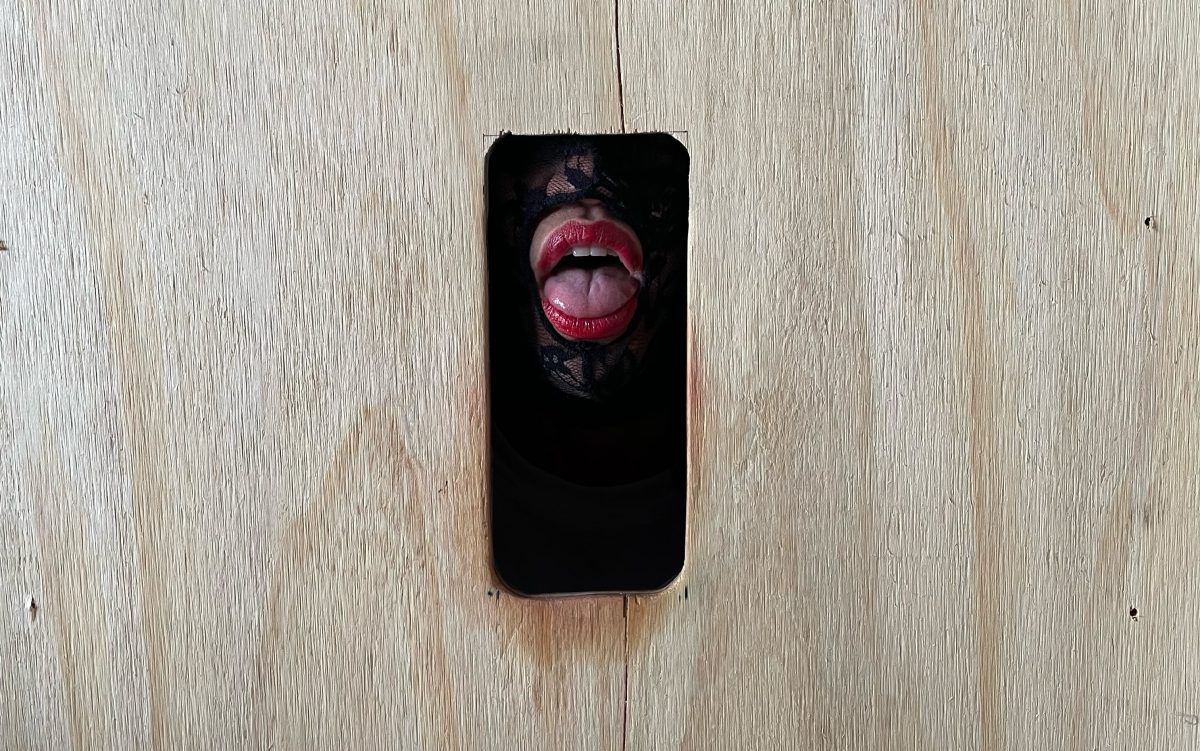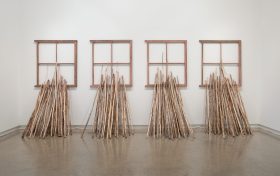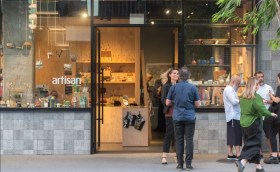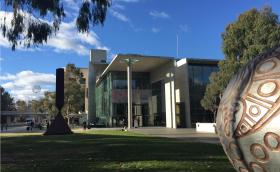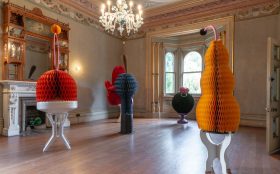Content warning: this article includes reference to child sexual abuse in the third paragraph.
Upcoming at MARS Gallery in the Melbourne suburb of Windsor is an exhibition by Emil Cañita. The show features a series of photographs that stage raw and reflective encounters with men Cañita has met through sex work.
While Cañita didn’t go through formal training as an artist, their work stems from a particular set of conditions and lived experiences that make the results so tender but also powerful.
Cañita has a Bachelor degree in Social Science, Health and Society, is a fierce sexual health advocate, especially for Asian diaspora communities, and was named a Community Champion by the National Association of People with HIV Australia. They are Filipino Australian, transgender-fluid and HIV Undetectable – meaning, they are on medication that protects them and their partners from HIV. They were raped as a child and their sex work actively creates a safe space to explore sexual desires through honesty and healing. They have a particular obsession with the concept of the glory hole, and they built one during Melbourne’s lockdown.
At First I was Afraid presents polaroid photographs of Cañita’s clients and sexual partners, taken in a state of authenticity and vulnerability. Inscribed on each photo with a white marker are stories, confessions and memories about the men’s sexuality, desires, loneliness and aspirations.
The format pays tribute to artist and social photographer William Yang, who has been an icon and mentor to Cañita ever since they came across his works at the age of 19. But, even before this, it was Australian critic Robert Hughes who made art accessible for Cañita.
Listening to Hughes’ BBC documentary, The Shock of the New, Cañita says, ‘[Hughes] didn’t study the arts, but he had a way of talking about art that made it so accessible… I remember falling in love and realising, “Oh, I want to be an artist”.’
At that time, Cañita lived two blocks away from the Queensland Centre for Photography, but their first visit didn’t really click. After a chance encounter with the director, Maurice Ortega, however, Cañita ended up volunteering at the Centre for the next three years. It was during this time that their understanding of what art can present and incorporate was taken to another level. This was eye-opening, they recall. ‘It was like, “What? As an artist you can talk about sex?”’ says Cañita.
One of Yang’s works that had a particular impact on Cañita was Joe (1979), depicting a young man with curly blond hair, lying on his side with his back exposed to the camera. On his body, Yang has inscribed an account of their meeting and the instant connection between them.
While Cañita works in a similar vein in their photographs, they almost always choose to let the words hug around the body, rather than directly writing on them. These works quite literally lay bare the individual, sometimes capturing their faces, other times cropping with a close-up of their genitals.

Presenting the works in a gallery setting is something Cañita has always wanted to do – as a love letter to Yang, a thank you to their HIV and Asia diaspora community and, perhaps to a certain extent, as a sign of hope to their younger self. Cañita was formally introduced to Yang in 2021, and he has become a friend and mentor. ‘He’s actually coming down for my opening [at MARS],’ they add, in what will be a beautiful full circle moment.
They continue: ‘It’s been a dream of mine to show in a gallery, and I want to do it justice. At the end of the day, I wanted to make sure it doesn’t compromise the safety of the people that I’m working with, because it’s their lives. For a lot of them, no one knows this side of their lives except for me.
’It’s a real sense of responsibility… I was saying to my psychologist I don’t really know why I decided to have this as my practice, because I could just be working on oil painting, but instead I decided to work with something that could just criminalise me, very very easily,’ they add with a laugh. There’s perhaps no other way to put it – it’s a calling.
They continue that, even within LGBTQIA+ communities, sex workers are still stigmatised. ‘We’re very lucky in Victoria that sex work here has been decriminalised. My art literally would not exist if not for the political, social and cultural environment – in so many ways, me being able to exist is actually a reflection of where the city’s at.’
In their work, Cañita documents moments of discomfort felt by their clients before coming through the door. The men often confess ‘I haven’t done anything like this before’ or ‘I’m straight but I’ve slept with men/trans people’. When they open up, they talk about their wives, girlfriends, partners and family; being lost or finding themselves; regrets and anxieties.
Cañita says part of the goal of documenting these is to ‘normalise that you can have very intimate, vulnerable conversations with one another’. They continue: ‘One of the most common things that I came across with the guys that I talk to – when I ask them little things like “How do you feel about this?” – is that [they will say] “No one has ever asked me before”.
‘I don’t know how much it has helped the men per se, but I know for the people that are engaged in my work, it’s definitely been helpful. I get feedback about people being more open about their sexuality.’
Read: Australia’s oldest craft gallery and studios facing closure
When asked what Cañita hopes viewers of At First I was Afraid will take away from the exhibition, they say: ‘I’m really just trying to show where my value system is and what my beliefs are. Hopefully, it helps normalise that.
‘If you’re going to be in a room with 17 figures naked in front of you, being vulnerable around you, I hope you feel the same way.’
Rather than fixating on this (constructed) duality of public/private, personal/political, Cañita advocates for a confession in hopes of being embraced as our whole, authentic selves.
At First I was Afraid will be on view at MARS Gallery from 1-30 March alongside Dignity of Memory and Charcoal Drawings by Xiao Lu. The opening reception is on 29 February 6-8pm.

